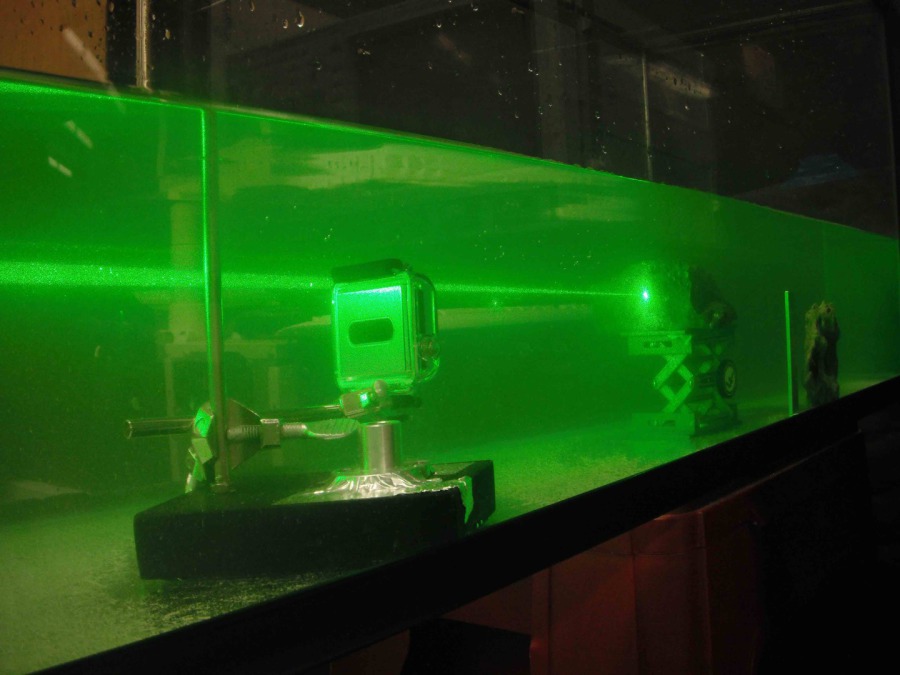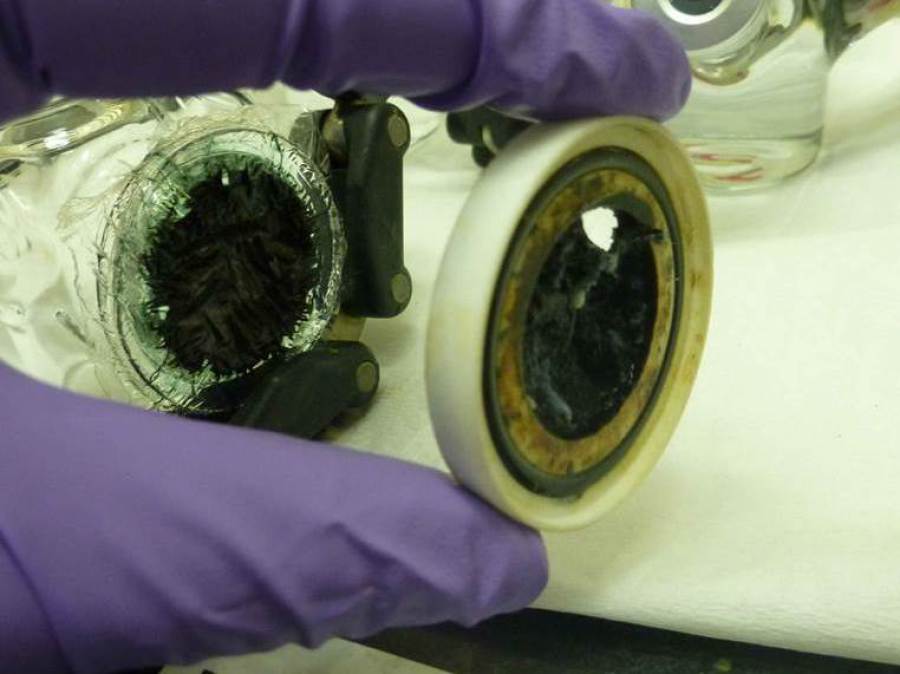Exploring Hydrothermal Vents as Planetary Analogs
Hydrothermal vents are environments that can support life on Earth and other worlds. Vents produce naturally occurring gradients can drive redox chemistry to support chemotrophic metabolism and, possibly, reactions toward the emergence of life. Hydrothermal chemistry can also drive organic alteration and support heterotrophic metabolisms. Understanding the details of life and habitability in vents can be challenging since these environments are difficult to access and monitor on the seafloor. We are working to use non-invasive methods to observe simulated hydrothermal chemistries in laboratory systems that mimic vents on early Earth and ocean worlds.
Current funded projects in this topic area:
Feeding Enceladus' Deep Biosphere
NASA Habitable Worlds program; PI: Laurie Barge; Co-I: Chris Glein (SWRI)
This project will address whether geological organic matter on Enceladus can support subsurface heterotrophic life. We will investigate the possibilty that geological organics from Enceladus' hydrothermally processed chondrite core could support a subsurface biosphere. Experiments will include: measuring the distribution of organics leached from a simulated chondrite core of Enceladus; studies of metal chelation in Enceladus' ocean conditions; and calculations / measurements of the energy produced by organics to support metabolism.
InVADER (In-Situ Vent Analysis Divebot for Exobiology Research)
NASA PSTAR program; PI: Pablo Sobron (SETI Institute / Impossible Sensing); Science-PI: Laurie Barge (JPL)
The INVADER project is studying underwater hydrothermal vents at Axial Seamount, the largest and most active volcano on the western boundary of the Juan de Fuca plate off the coast of Oregon. These vents generate chemical energy which can support life, and are analogs to putative vent systems on ocean worlds. InVADER's science goals are to charaterize the geochemistry, geobiology, and metabolic activity in Axial Seamount as an analog for planetary exploration, with a combination of field work, analysis of returned data, and laboratory sample analysis. In particular, we are interested in investigating the ability of planetary mission-relevant technqiues such as Raman spectroscopy and Laser Induced Breakdown Spectroscopy (LIBS) to understand the astrobiological potential of these hydrothermal mineral precipitates.
Archived projects (meaning that the funding period is ended; however, these remain areas of interest for the research group and are possibilities for students who have their own fellowships or funding):
New Materials Science Technologies for Testing Origin of Life on Ocean Worlds
JPL Researchers on Campus (JROC) program, PI: Laurie Barge, Co-I's: Katherine Faber, Julia Kornfield, Yuk Yung (Caltech)
In this project we will explore new laboratory methods for conducting early Earth and ocean world experiments to simulate the origin of life in hydrothermal vents. A technology limitation so far for these experiments has been the need to control fluid flow in a 3D porous structure that can simulate a hydrothermal chimney, and conduct experiments under realistic vent pressures & temperatures. In this work we will utilize materials science methods to create porous catalytic structures that can simulate prebiotic hydrothermal chimney pores.
Electrochemical Studies of Hydrothermal Systems
Scialog 2021, "Synthetic Mineral Geo-Electrodes for Detecting Life on Ocean Worlds", PI's: Laurie Barge & Jeff Marlow (Boston U.)
JPL Research & Technology Development 2017-2019, "Planetary Habitability Test Beds", PI: Laurie Barge, Co-I's: John-Paul Jones, Scott Perl, Charlie Krause, Keith
Billings.
We are interested in simulating electrochemistry of vent environments that cannot easily be studied in situ, such as vents on Europa, Enceladus, early Earth, and/or early Mars. Fuel cell experiments,
where the hydrothermal and ocean solution reservoirs are separated by membranes and/or electrodes with properties similar to the chimney wall, allow us to test the energy present in these systems and
make predictions about origin of life reactions and habitability in vents in various types of environments. Currently we are focusing on CO2 reduction reactions under Enceladus analog conditions,
using minerals such as chondrites and olivine as catalysts. This work is being done in collaboration with the JPL Electrochemical Technologies group and Boston University.
In-Situ Spectroscopic Europa Explorer (iSEE)
NASA MaTISSE program; PI: Pablo Sobron (SETI Institute / Impossible Sensing); Co-I: Laurie Barge
I am a science Co-I on the iSEE project, which seeks to build and develop a next-generation ultra-compact Raman spectrometer for planetary missions to the inner and outer Solar System. Some of the science goals are to detect organic compounds, define / identify biosignatures, and detect mineralogy.



